Manuale Panasonic NN-F653 Microonde
Hai bisogno di un manuale per il tuo Panasonic NN-F653 Microonde? Di seguito è possibile visualizzare e scaricare gratuitamente il manuale in PDF in italiano. Questo prodotto attualmente ha 7 domande frequenti, 0 commenti e ha 0 voti. Se questo non è il manuale che desideri, contattaci.
Il tuo prodotto è difettoso e il manuale non fornisce alcuna soluzione? Rivolgiti a un Repair Café per il servizio di riparazione gratuita.
Manuale
Loading…

Loading…
Valutazione
Facci sapere che cosa pensi della Panasonic NN-F653 Microonde valutando il prodotto. Vuoi condividere la tua esperienze con questo prodotto o porre una domanda? Ti preghiamo di lasciare un commento al fondo della pagina.Maggiori informazioni su questo manuale
Comprendiamo che sia bello avere un manuale cartaceo per i tuoi Panasonic NN-F653 Microonde. Puoi sempre scaricare il manuale dal nostro sito web e stamparlo tu stesso. Se desideri avere un manuale originale, ti consigliamo di contattare Panasonic. Potrebbero essere in grado di fornire un manuale originale. Stai cercando il manuale del tuo Panasonic NN-F653 Microonde in un'altra lingua? Scegli la tua lingua preferita sulla nostra home page e cerca il numero del modello per vedere se è disponibile.
Specifiche
| Marca | Panasonic |
| Modello | NN-F653 |
| Categoria | Microonde |
| Tipo di file | |
| Dimensione del file | 2.17 MB |
Tutti i manuali per Panasonic Microonde
Altri manuali di Microonde
Domande frequenti su Panasonic NN-F653 Microonde
Il nostro team di supporto cerca informazioni utili sul prodotto e risposte alle domande più frequenti. Se trovi un’inesattezza nelle nostre domande frequenti, ti preghiamo di farcelo sapere utilizzando il nostro modulo di contatto.
Il mio forno a microonde non si avvia quando premo il pulsante di avvio, cosa posso fare? Verificato
In molti casi la porta del forno a microonde non è stata chiusa correttamente. Aprire e chiudere la porta e riprovare.
È stato utile (3119) Per saperne di piùPosso usare il microonde se il piatto girevole non funziona? Verificato
Il piatto girevole garantisce una distribuzione uniforme del calore. Se non funziona, non è possibile utilizzare il microonde correttamente, quindi è necessario ripararlo.
È stato utile (1912) Per saperne di piùIl microonde è acceso ma non funziona. A cosa può essere dovuto? Verificato
È possibile che lo sportello non si chiuda correttamente. Per garantire la sicurezza, i microonde non si accendono fino a che lo sportello non è completamente chiuso. A volte il problema si risolve sistemando la cerniera dello sportello.
È stato utile (1295) Per saperne di piùLa piastra di mica/cartone dentro al microonde si è staccata. Posso utilizzare ancora il microonde? Verificato
No, assolutamente no. La piastra di mica/cartone è la guida d’onda che distribuisce le microonde. Rimontarla o sostituirla.
È stato utile (1196) Per saperne di piùIl microonde continua a fare rumore, anche dopo l’utilizzo. È normale? Verificato
Sì, è un rumore normale. La ventola raffredda il microonde dopo l’uso per un periodo di tempo che dipende da quanto a lungo è stato utilizzato il microonde.
È stato utile (998) Per saperne di piùPerché non posso mettere dei metalli nel mio forno a microonde? Verificato
Il metallo non lascia passare le microonde ma le rimbalza. Quando le microonde vengono rimbalzate nello stesso punto, possono causare scintille.
È stato utile (721) Per saperne di piùPosso bollire l’acqua nel microonde? Verificato
No, assolutamente no. L’acqua può surriscaldarsi, ovvero raggiungere una temperatura superiore ai 100°C senza bollire. Quando quest’acqua tocca qualsiasi oggetto inizia a bollire immediatamente e a schizzare, rischiando di provocare bruciature.
È stato utile (721) Per saperne di più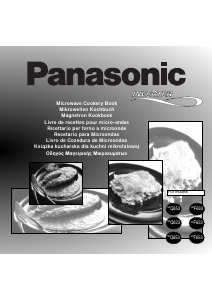


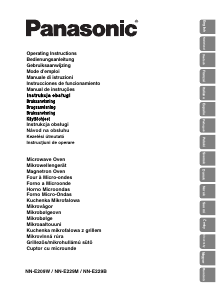
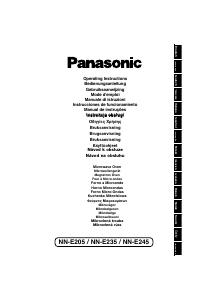
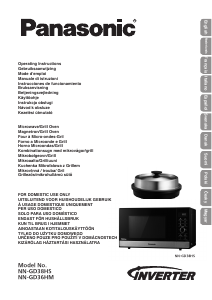
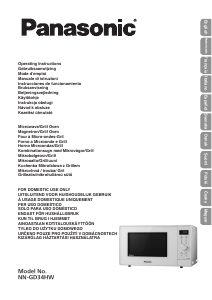


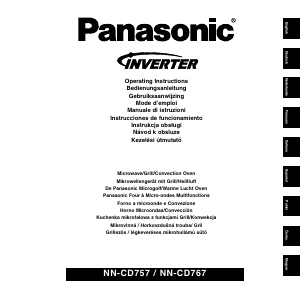
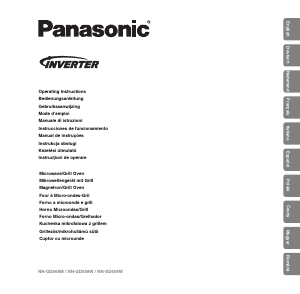
Partecipa alla conversazione su questo prodotto
Qui puoi condividere cosa pensi di Panasonic NN-F653 Microonde. Se hai una domanda, leggi prima attentamente il manuale. La richiesta di un manuale può essere effettuata utilizzando il nostro modulo di contatto.